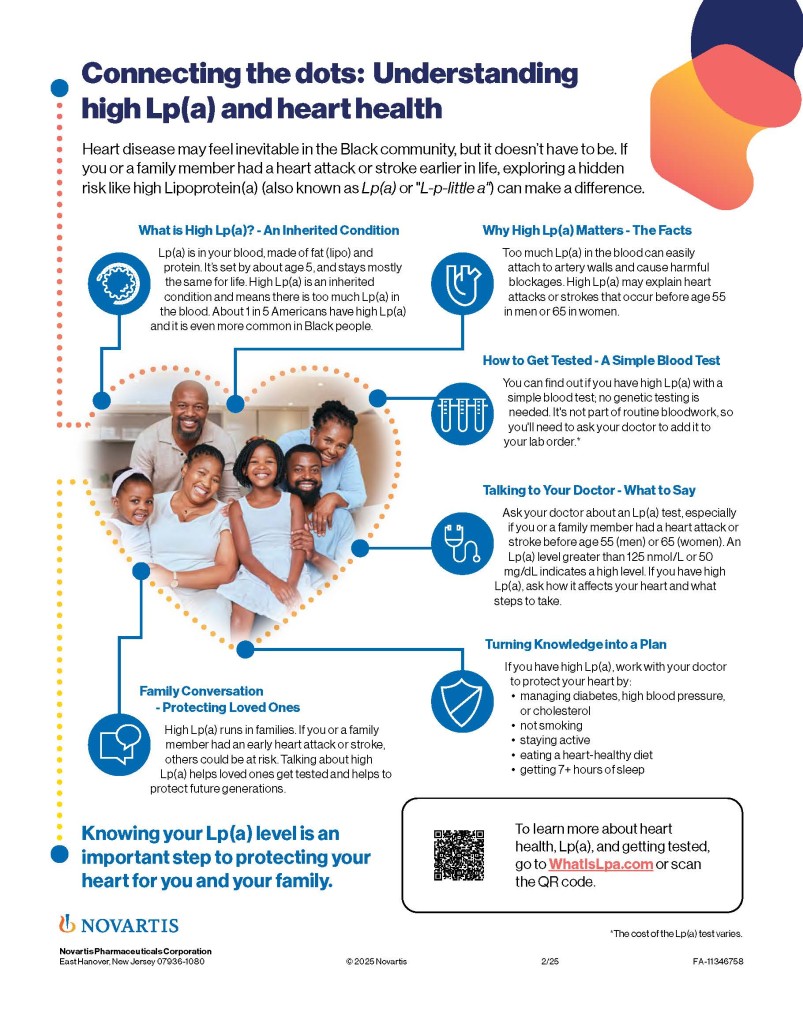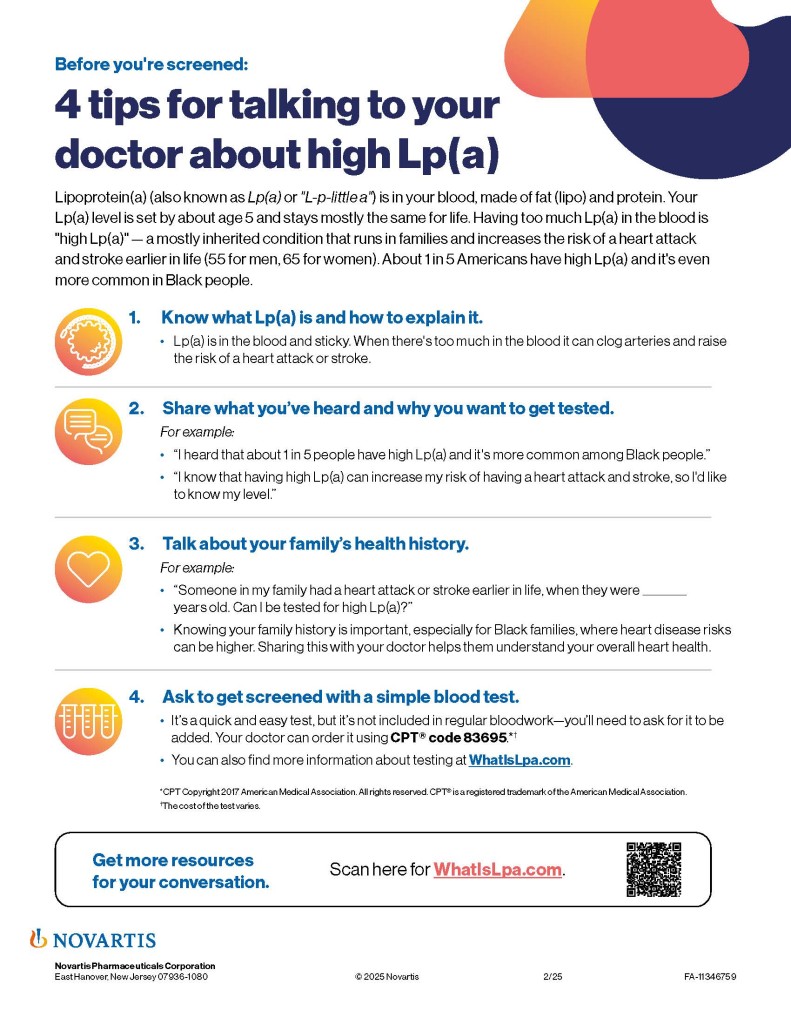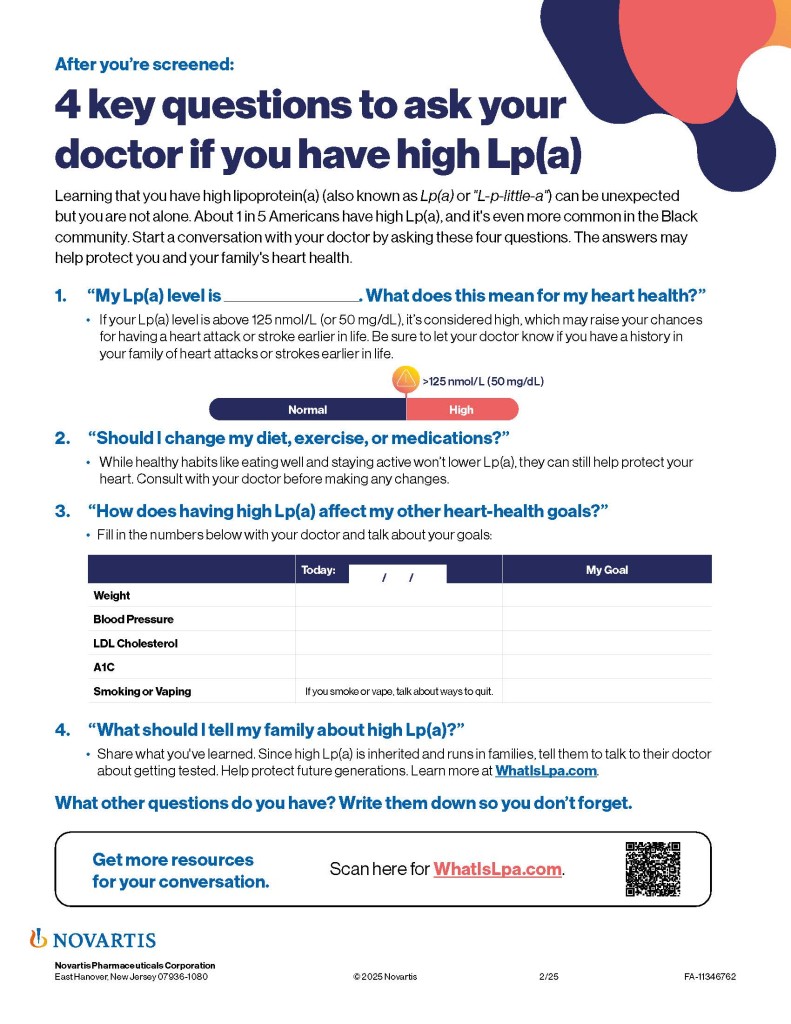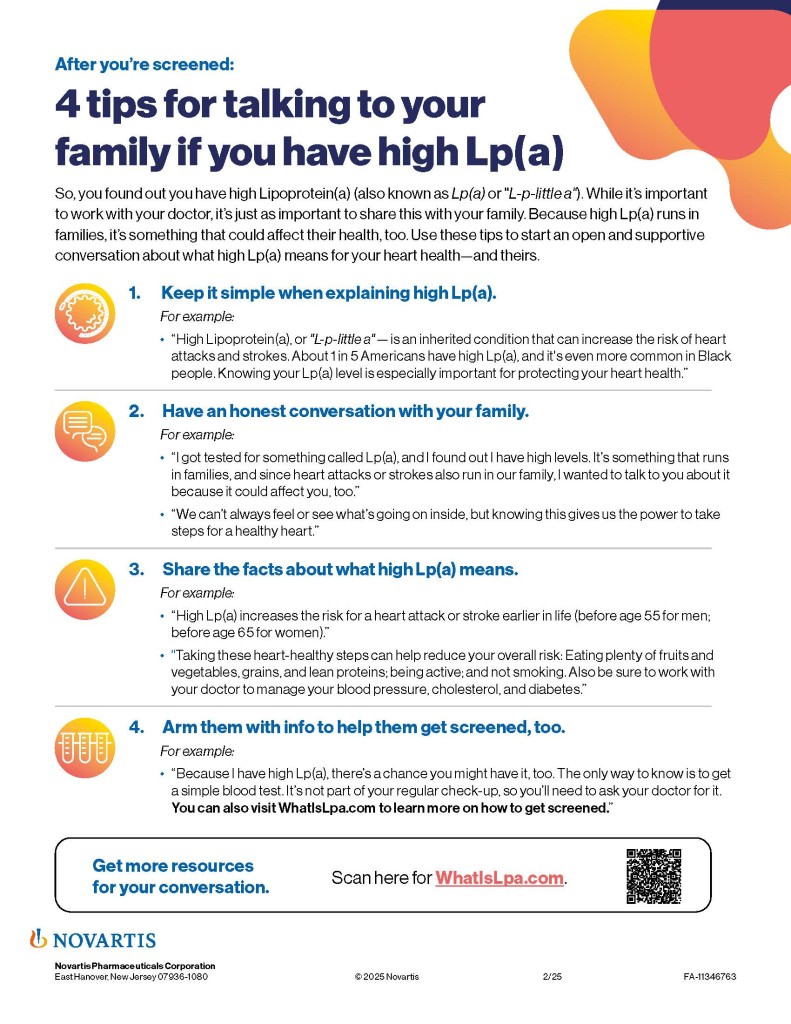Developed under the direction and sponsorship of Novartis Pharmaceuticals Corporation.
High Lp(a):
Protect your heart, protect your family

Your heart health deserves more attention.
Heart disease continues to be a common health challenge for many Americans. It is all too familiar in the Black community. Many people may see it as a part of life—something that’s bound to happen. But it doesn’t have to be. If you or someone in your family has had an early heart attack or stroke, it is important to explore a hidden risk like high Lp(a).
What is high Lp(a)?
Lipoprotein(a), also known as Lp(a) or "L-p-little-a," is in your blood, made of fat and protein. Your Lp(a) level is set by about age 5 and remains mostly the same for life. Lp(a) is sticky and having too much of it in your blood can clog arteries, raising the risk of heart attack and stroke earlier in life. About 1 in 5 Americans inherit high Lp(a) and it's even more common in Black individuals and in those who’ve experienced heart attacks or strokes at an early age (before 55 for men or 65 for women).
If you or a family member has had a heart attack or stroke earlier in life, it is essential to know your Lp(a) level. Because high Lp(a) runs in families, others may also be at risk. Talking about high Lp(a) with loved ones can encourage them to get tested, helping to protect your family starting today.
Why testing matters

- Lp(a) testing often isn’t included in routine bloodwork today, which means high Lp(a) can go unnoticed.
- A simple blood test added to your routine bloodwork is all it takes to uncover this inherited, hidden risk. No genetic testing is needed.
- Once you know if you have inherited high Lp(a), you can create a plan with your doctor to help protect your overall heart health.
What can you do?

Talk to your doctor.
Start the conversation about Lp(a). Ask for a blood test that measures your Lp(a) level. And remember to tell your doctor if you have a family history of early heart attacks or strokes.

Share with your family.
Because high Lp(a) is passed down through generations, your loved ones might also be at risk. Have a conversation with your family about high Lp(a) and encourage them to get tested too.

Make heart health a priority.
While healthy eating and exercise won’t lower your Lp(a) level, these habits can protect your heart in other ways. Small changes like walking as a family, choosing heart-healthy meals, and quitting smoking can make a big difference. Talk with your doctor about ways to support your overall heart health by managing other conditions like:
- high blood sugar (diabetes)
- high blood pressure
- high bad (LDL) cholesterol
Resources to help you get started
Take the first step today.
Knowing your Lp(a) level is a simple, powerful way to help protect yourself and your family.

To learn more about heart health, high Lp(a), and getting tested, go to WhatIsLpa.com or scan the QR code.
2/25 ![]() FA-11342721
FA-11342721





